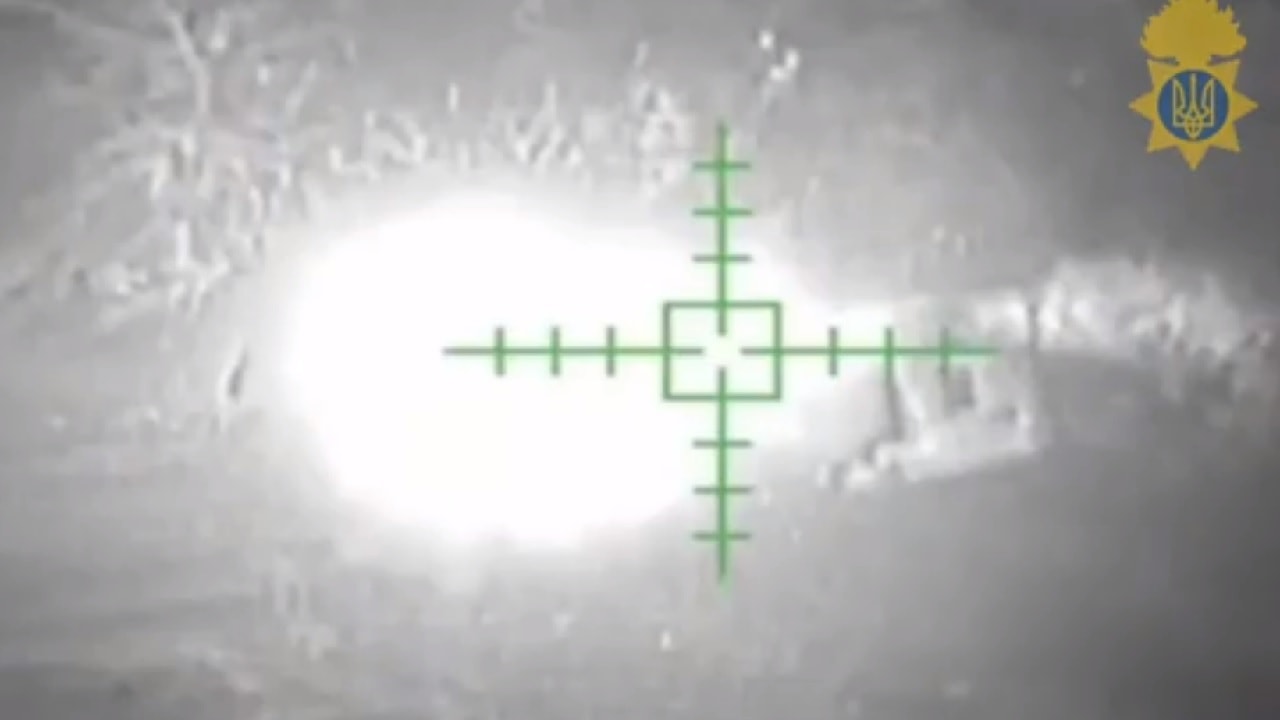Nazi Germany’s Luftwaffe conducted some 140 air raids over Moscow in 1941 and early 1942, including eight large-scale sorties. Because of the distance from German airfields, and thanks in part to well-organized air defenses and efforts to conceal critical targets, the strikes did little damage.
Unlike other major Soviet cities, the capital escaped the war with little damage.
Moscow is not so invulnerable anymore. Ukraine continues to send drones against the Russian capital, with the latest strike hitting a building in the city center early Friday morning after Russian air defenses shot it down.
Mayor Sergey Sobyanin said via the Telegram social messaging app that debris from the drone fell into the Expo Center, a trade show and exhibition center located about 3 miles (5 kilometers) east of the Kremlin.
Sobyanin said that the drone didn’t cause “any significant damage to the building,” and added that there were no reports of casualties. This latest incident marks the third time the central district of Moscow was struck by drone debris.
Air traffic at all four of the civilian airports of the Russian capital was shut down, and more than a half a dozen flights were diverted to other cities.
Videos circulated on social media on Friday showing the attacks and their aftermath. While the damage is relatively minor, especially compared to what Kyiv and other Ukrainian cities have faced, it is notable that Moscow now sits square in the crosshairs.
Russia Blames Ukraine
The Russian Defense Ministry accused Ukraine of conducting the attack.
“At around 4 a.m. Moscow time, the Kiev Regime attempted to carry out another terror attack with the use of an unmanned aerial vehicle, which targeted facilities in Moscow and the Moscow Region,” the ministry said in a statement, reported by state media outlet Tass. “After being hit by the air defenses, the drone changed its flight path and fell on a non-residential building near Moscow’s Krasnopresnenskaya Embankment. [The incident caused] no damage or fire.”
Kyiv has not claimed responsibility for Friday’s drone strike, but in the past, it has admitted to using a variety of unmanned aerial vehicles to strike deep within Russian territory.
Mykhailo Fedorov heads Ukraine’s Digital Transformation Ministry, which initiated an “army of drones” procurement plan earlier this year. Fedorov warned last month that more drone strikes could be expected as Ukraine’s forces seek to drive Russian troops out of occupied territory, CNN reported.
The Ukraine War Has Come to Moscow
Until earlier this year, the Russian capital had remained untouched by the war in Ukraine. But drone strikes deep within Russia have picked up since a small UAV was destroyed over the Kremlin in early May. Several buildings in Moscow were damaged in a strike in late May, while last month, in two separate strikes, drones crashed into the glass façade of a skyscraper near the Expo Center.
The fact that these strikes are doing any damage is significant, given the aerial defenses in the Russian capital. As The Economist reported, the Moscow Air Defence Directorate was initially established in 1918, with 36 anti-aircraft guns. It has been significantly upgraded many times, and the system currently includes surface-to-air missile complexes, radar, and jet fighters. The outer layer of defense — known as the a-135 — is equipped with anti-ballistic missiles. No other city in Europe, apart from Kyiv, has anything like it.
And yet, the drones are getting through.
⚡️Overnight, #Moscow was again attacked by drones. An explosion was heard near the Moscow City business centre and the building of Expocentre (a Russian exhibition company) was damaged.
Moscow Mayor #Sobyanin claimed that air defence forces allegedly downed the drone, but its… pic.twitter.com/2FJyGmoNdW
— KyivPost (@KyivPost) August 18, 2023
Author Experience and Expertise
A Senior Editor for 19FortyFive, Peter Suciu is a Michigan-based writer. He has contributed to more than four dozen magazines, newspapers, and websites with over 3,200 published pieces over a twenty-year career in journalism. He regularly writes about military hardware, firearms history, cybersecurity, politics, and international affairs. Peter is also a Contributing Writer for Forbes and Clearance Jobs. You can follow him on Twitter:@PeterSuciu.
From the Vault
‘You Really Oughta Go Home’: F-22 Raptor Stealth Fighter Flew Under F-4 From Iran

